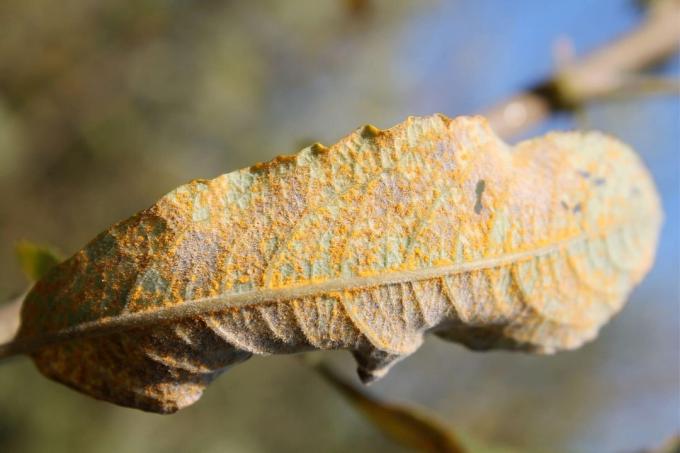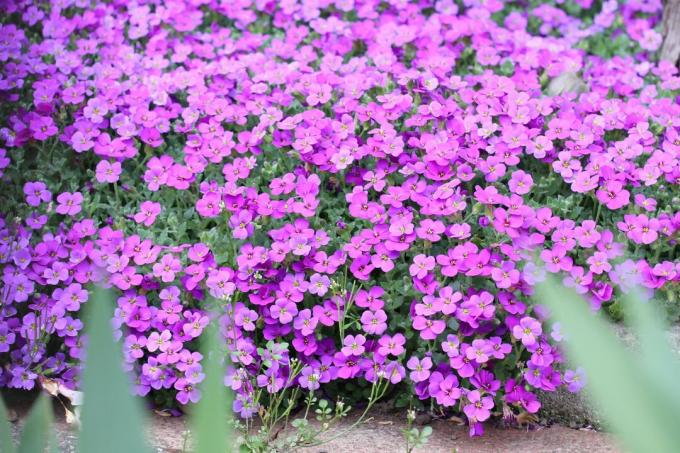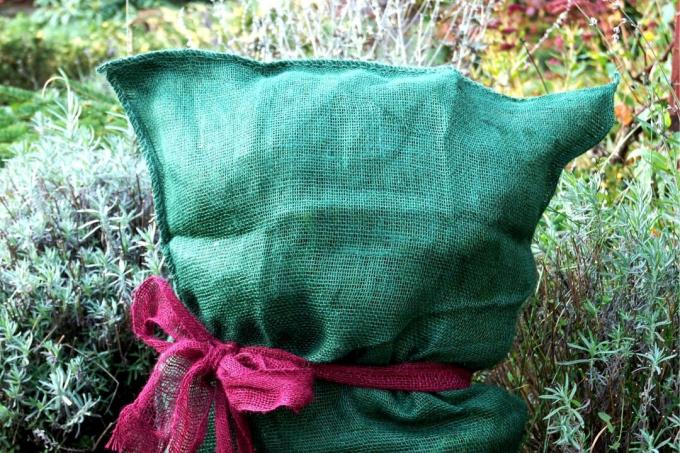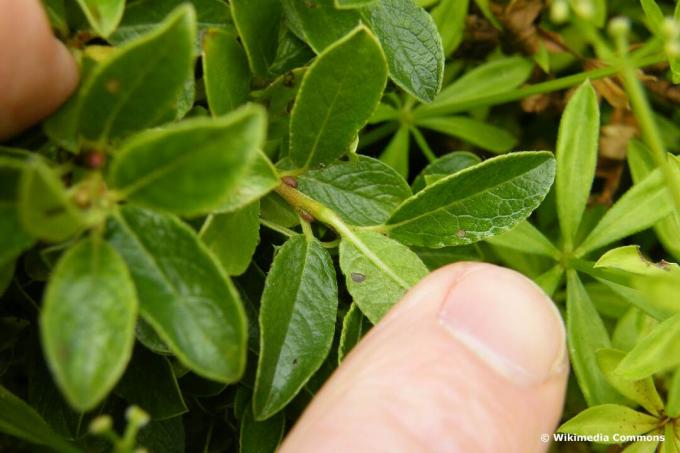
Table of Contents
- soil and location
- flowering and flowering time
- fertilizing and watering
- diseases and pests
- plant
- plant neighbors
- To cut
- hibernate
- repot
- multiply
- frequently asked Questions
Profile and care information open +shut down -
- flower color
- yellow, inconspicuous
- location
- shade, penumbra
- heyday
- July
- growth habit
- Dwarf shrub, overhanging
- height
- up to 40 cm high
- soil type
- stony
- soil moisture
- moderately moist
- lime tolerance
- Lime tolerant
- humus
- k. A
- Poisonous
- no
- plant families
- Willow family, Salicaceae
- plant species
- pot plants, rock garden plants
- garden style
- rock garden, pot garden
The dwarf willow is a small tree that does not grow higher than 30 to 40 centimeters. The plant is suitable for being kept in tubs as well as for a garden bed due to its winter hardiness and is very easy to care for.
soil and location
Due to its small size, the dwarf willow finds a place in every garden and also in pots. Due to its original home in the mountains, it also prefers a rather stony soil in the local latitudes. The location should not be too dark. Precisely because of the small size, larger plants can quickly form shadows, which should be avoided:
- Location likes full sun
- partial shade is also possible
- Rock garden in the front yard
- bucket up south balcony or sunny terrace
- permeable and mineral soil
- Enrich normal garden soil with gravel
- Use potting soil with gravel for buckets
- do not add compost or other nutrients
- lime loving
- so make sure you have enough lime
Tip: If your sapling willow gets at least three hours of sun a day, then this is the optimal location.
flowering and flowering time
The inconspicuous silver-grey flowers with yellow or green pollen usually appear in June. Thereafter, two-valved capsule fruits are formed.

fertilizing and watering
Due to the poor soil on which Salix arbuscula grows in nature, this willow species requires few nutrients and therefore little maintenance. However, various minerals should be added regularly with the fertilizer. So the plant likes it especially chalky:
- pour with tap water
- contains a lot of lime in some areas
- water regularly
- short drought is tolerated
- Water daily if possible during hot periods
- in the early morning or late evening hours
- Use mineral fertilizers for rock gardens
- fertilize regularly during the growing season
- Observe the manufacturer's instructions for dosing
Notice: Since the dwarf willow does not need many nutrients, it does not make sense to fold in compost here, as is common with many plants. Otherwise, the plant could be over-fertilized.
diseases and pests
Even if the care of the dwarf willow is very simple, diseases can still occur more often or the plant can be attacked by pests. Diseases in particular, such as various fungi, are a big issue in all pastures. Above all, dieback and willow rust should be mentioned here. However, after cutting back the affected areas and treating them with fungicides, both fungal diseases in Salix arbuscula can be brought under control:
- cut off everything affected
- collect fallen leaves
- do not dispose of in the compost, but in the residual waste

In addition, willows are often used by spider mites haunted:
- Leaves turn brown and curl up
- fall off afterwards
- Use a special insecticide to control spider mites
- Home remedies are usually not enough
- The plant will sprout again next spring
Notice: If it was very warm and dry in the last few weeks, the plants can also suffer from this and shoots will dry up and die. In a supposed case, the rule in the care is to muddy it up immediately and then give it regular and always enough water.
plant
A rock garden is ideal for caring for the dwarf willow. However, the plant can also find a place in a normal garden bed or in a meadow as a solitaire. For this, the normal garden soil is simply mixed with gravel so that it releases fewer nutrients and more minerals to the tree. When planting, the following should be considered:
- spring appropriate time
- Ground should no longer be frozen
- dig a wide and shallow planting hole
- Mix soil accordingly
- on ground drainage of gravel or stones
- Remove the plant from the supplied pot
- place and cover lightly with soil
- However, roots should no longer be visible
- then water well
Notice: The Nordic tree willow can be planted all year round. However, spring is the best time because the plant can then grow well over the vegetation period and thus survive the first winter well.
plant neighbors
Since the dwarf willow is a plant that requires little nutrition, it is important that the plants with which it is to be cultivated do the same suitable for a rock garden are. Otherwise, the fertilizer that is intended for the neighboring plants could damage the tree pasture by supplying too much nutrients. Suitable here are:
- aloe vera
- Blue Cushion (Aubrieta)
- Blue fescue (Festuca glauca)
- Scented Stone Rich (Lobularia maritima)
- Thrift (Armeria maritima)
- Thyme (Thymus vulgaris)
- Wollziest (Stachys byzantina)
- Dwarf pine (Pinus mugo var. pumilio)

To cut
Since the tree willow is a very small shrub, it usually does not have to be cut. However, the plants are often offered in the trade as small high-stems:
- Cut if necessary in spring before sprouting
- Cut off any frozen or dried branches
- Cut shoots growing from below directly at the base
- otherwise the standard tree will become a shrub again
- further pruning only for fungal diseases
- then cut back to fresh wood
- use secateurs
- sharp, clean and disinfected
- no target for viruses and bacteria
Tip: If you prune your sapling willow a little more because of dried up branches or a fungus infestation If you have to, this is not a problem, because all willow species, including Salix arbuscula, are good cut compatible.
hibernate
If the plant was cultivated in a rock garden, then no measures are necessary here. Due to its origin, the dwarf willow can withstand temperatures of down to -12° Celsius. Cultivated in a bucket, however, a few measures should be taken:
- Place bucket on wooden pallet
- Styrofoam alternative
- Cover the pot with brushwood mats, plant fleece or a jute sack
- Do not mulch Salix arbuscula in the bed or in the tub
- Release of too many nutrients
- are not tolerated by plants

repot
Repotting is recommended for the first few years so that the shallow roots can gradually spread. When the plant is about ten years old, however, it is fully grown and no longer needs a wider pot. Since a nutrient supply with fresh substrate is not necessary, Salis arbuscula can then remain in the bucket without further repotting:
- repot young plants about every two years
- choose a wide but flat bucket
- create drainage over the drain hole to prevent waterlogging
- Fill about 3/4 of the prepared soil with gravel
- Do not plant the tree willow too deeply
- fill in the rest of the soil
- water well
multiply
A dwarf willow can easily be propagated by cuttings. In this way, the original plant is also propagated, which has the same properties as the mother plant. This is usually not the case when sowing with collected seeds:
- Cut cuttings in spring
- use new, not hard shoots
- remove lower leaves
- put in a pot with potting soil
- put in a warm, bright place
- avoid direct sunlight
- keep moist
- form the first roots in suitable soil in a pot

Only when the plant has grown big enough should it be placed in the desired location in the garden bed. If the plant is planted out beforehand, it can happen that the small plant is destroyed by animals such as hedgehogs or birds running around in the garden.
frequently asked Questions
Since Salix arbuscula is a flat-rooted plant, it makes sense to choose a wide bucket that is not too deep. Here the little tree can spread its roots to all sides and is not constricted. Below, on the other hand, little space is required. Since the tree remains very small, the roots do not cause any damage to surrounding paths or a terrace, even when planted in a garden bed.
Especially if you cultivate the plant with other plants in the garden bed, over-fertilization can quickly occur. Therefore, enrich the soil around the plant with gravel and stones and thus degrade a good garden soil a little. This thinning of the soil in the area of the sapling pasture reduces excessive nutrient uptake.
When the leaves turn yellow and fall off in autumn, this is a natural process in the deciduous plant. However, if this happens in summer, it could be due to drought or the dreaded willow rust, a fungal infestation that likes to attack willow species. If this is the case, you must dispose of the affected leaves in the general waste and treat the entire plant and the soil with a fungicide.
You can buy the plant in well-stocked gardening shops already as a finished standard. Normally, however, the dwarf willow grows as a small, overhanging shrub. It is compact and rounded and does not have to be cut into this shape.



